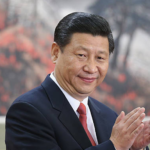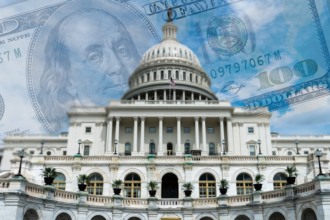Early April saw an unexpected but noteworthy change in the global financial scene: the Trump Tariff Reversal Policy Shift. This surprising action immediately saw the Trump administration withdrawing several of the announced sweeping reciprocal duties, reducing world trade tensions. The policy change signaled a pivotal turning point in U.S. economic strategy and mirrored the changing power dynamics inside the White House, transcending mere reaction.
- Why did the White House choose to reverse the Trump Tariff Reversal Policy?
- Behind-the-scenes driving of the Trump Tariff Reversal Policy shift?
- How did the Trump Tariff Reversal Policy Shift affect the markets?
- How Will the Trump Tariff Reversal Policy Change Affect Businesses?
- Last Thoughts on the Reversal Policy Shift in the Trump Tariff
For weeks, business executives have voiced concerns about the widening trade conflict and its possible effects on world supply chains and financial stability. The Trump Tariff Reversal Policy Shift announcement communicated to investors and world markets that the White House was ready to change and recalibrate its economic policies to prevent more damage. The action instantly calmed markets, offering some little steadiness in otherwise erratic surroundings.
Why did the White House choose to reverse the Trump Tariff Reversal Policy?
Examining the individuals engaged and the larger economic environment helps one better understand the cause of the Trump Tariff Reversal Policy Shift. Initially, mainly focusing on China and other important trading partners, the Trump government had positioned tariffs as a fundamental component of its “America First” program. However, as American companies expressed their concerns and worldwide markets responded unfavorably, demand for a review grew.
Treasury Secretary Scott Bessent lay at the core of the policy change. A former hedge fund manager and seasoned financial expert, Bessent became the public face of the choice practically right away. His close contacts with the corporate community and thorough awareness of the bond market gave him special power to shape the President’s perspective.
Those familiar with the decision-making process say that Bessent’s interactions with President Trump—both in the Oval Office and on Air Force One—were crucial. Bessent presented the reversal as a better, market-conscious change that would still let the government pursue its trade aims while avoiding possible economic consequences rather than as a retreat.
Behind-the-scenes driving of the Trump Tariff Reversal Policy shift?
The Trump Tariff Reversal Policy Shift resulted from changing viewpoints inside the government rather than from one voice. While Bessent became the most vocal supporter of a recalibration, other well-known personalities, including trade adviser Peter Navarro and commerce secretary Howard Lutnic, advocated a more forceful posture.
Navarro and Lutnick conspicuously missed the public statement, casting doubt on internal White House power changes. Their absence suggested a fresh approach: letting leaders like Bessent, with a more balanced and market-friendly stance, take the front stage in trade talks and public messaging.
This deliberate rearranging of duties also helped to clear the uncertainty afflicting the government’s public message. Inconsistent remarks from several officials had left companies and investors wondering about the course of U.S. trade policy for months. Markets greeted the fresh clarity and direction the Trump Tariff Reversal Policy Shift brought.
How did the Trump Tariff Reversal Policy Shift affect the markets?
The Trump Tariff Reversal Policy Shift was greeted in the market with a quick and mostly favorable response. Stock prices jumped, and market turbulence calmed within hours of the announcement. The policy change let investors know the government was ready to pay attention to market comments and act forcefully to stop needless disturbance of the economy.
Given growing concerns about a full-scale worldwide trade war, this shift was crucial. Now that tariffs were temporarily stopped, companies discovered fresh space to negotiate, changing supply networks and trade ties with less chance of unannounced, harsh legislative adjustments.
Furthermore, the consistent and clear message accompanying the policy change helped restore investor faith. Under Bessent’s direction, the government delivered a cogent story that soothed markets and stakeholders instead of sending contradicting signals from different White House officials.
How Will the Trump Tariff Reversal Policy Change Affect Businesses?
The Trump Tariff Reversal Policy Shift offers businesses both a warning and a chance. On one side, the choice shows how adaptable economic policy under the Trump administration may be to fit corporate reality and market demands. Conversely, it emphasizes the need to remain aware of political events that may quickly change the commercial environment.
Today, globally minded companies prioritize contingency planning, hedging against future regulatory changes, and maximizing the present stability window. Supply chains, investment strategies, and growth plans are all under review under the new trade environment molded by the Trump Tariff Reversal Policy Shift.
This episode reminds investors and legislators that trade policy is more about timing and negotiating than ideas. The Trump government’s readiness to change implies that, given strong economic reasoning, even firmly held beliefs can change.
Last Thoughts on the Reversal Policy Shift in the Trump Tariff
One obvious illustration of how strategic decision-making and adaptive leadership could impact world trade in the future is the Trump Tariff Reversal Policy Shift. Although the first tariff announcements sparked panic, the reversal helped stop the matter from spiraling into a more general financial disaster.
Looking ahead, companies and investors should continue observing the administration’s likely changing trade policies. On the other hand, the focus on open communication and stable markets creates a positive model for the next legislative changes.
Finally, the Trump Tariff Reversal Policy Shift has underlined the need for adaptability, cooperation, and strategic foresight in policymaking. These kinds of decisions will help reconcile national interests with international cooperation for years to come as the global economy confronts continuous difficulties.








